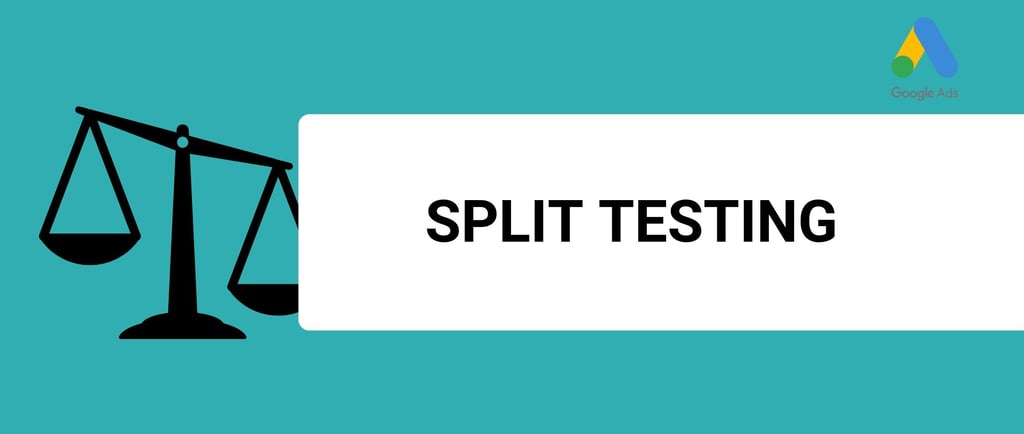Google Ads Split Testing Strategies for Maximizing Conversions
Discover practical Google Ads split testing strategies to optimize ad performance and increase conversions. Learn how to test headlines, descriptions, and more using best practices for faster ROI.
CAMPAIGN OPTIMIZATION
10/23/20244 min read


Are you leaving conversions on the table by not using Google Ads split testing? In today's competitive market, every click counts. Whether you're managing campaigns for clients or your own business, split testing can quickly reveal which ads are worth the investment. Here's how you can implement Google Ads split testing today for fast, measurable improvements to your campaign performance.
Why Google Ads Split Testing is Crucial for Success
Google Ads split testing is the key to maximizing your ad performance without increasing your spend. By systematically testing different variations of your ad components—whether it’s headlines, descriptions, or landing pages—you can quickly see what works and what doesn’t.
With the right split testing strategies, you can:
Identify top-performing ad variations: Split testing allows you to isolate and scale what works best.
Minimize wasted ad spend: By stopping underperforming ads early, you save budget for high-performing versions.
Boost conversions: Optimized ads mean higher relevance and better click-through rates (CTR), leading to more conversions.
Testing Different Combinations: Pinned, Unpinned, and DKI
A crucial part of Google Ads split testing involves testing different combinations of pinned, unpinned, and dynamic elements like Dynamic Keyword Insertion (DKI). These experiments help you strike the right balance between flexibility and control in your ad copy, improving overall performance.
Combinations to Test:
DKI vs. Unpinned: Test Dynamic Keyword Insertion (DKI) in position 1 against unpinned headlines. DKI inserts the searcher's query into the ad, making it highly relevant to the user's intent. By comparing DKI with unpinned assets (where Google dynamically selects the best-performing headlines), you can determine which setup yields better CTR and conversions.
Pinned vs. Unpinned: Pinning allows you to control specific headlines or descriptions, ensuring certain messages always appear in key positions. This is useful when you want to maintain consistent messaging (e.g., keeping a strong CTA in position 1). Unpinned ads, on the other hand, allow Google to test more combinations and optimize based on performance data.
Best Practices for Combinations:
Start with DKI in Key Positions: Implement DKI in position 1 and compare its performance against unpinned headlines, analyzing which leads to more clicks or conversions.
Review Asset Performance Regularly: Use the Asset Details Report within Google Ads to identify the top-performing headlines and descriptions. This report shows performance labels (e.g., “Best” or “Low”), helping you understand which assets contribute most to your ad success. From there, you can pin the highest-performing assets to lock in the winning combinations.
By regularly checking the Asset Details Report and testing different combinations, you can fine-tune your ads, keeping the highest-converting elements while continually optimizing for better results.
Quick Wins for Google Ads Split Testing
When implementing Google Ads split testing, simplicity is key. Focus on a few impactful tests that yield quick results:
1. Headlines & Descriptions
Responsive Search Ads (RSAs) offer a unique advantage, as they allow for up to 15 headlines and 4 descriptions. But too many combinations can slow down your testing results. Limit the number of variations to speed up learning and pinpoint top-performing combinations. Test different calls-to-action (CTAs), urgency triggers, or value propositions in the headlines.
For example, test headlines like:
“Get 50% Off Today – Limited Time!”
“Boost Your Business with Expert Ads”
"*Your Product* Starting From [Insert Price]"
2. Landing Page Testing
Matching your ad copy with your landing page is critical for maximizing conversions. You can also test different versions of landing pages to see which resonates best with your audience. Even small tweaks—like adjusting the headline on the landing page to align with the ad—can make a significant difference.
How to Run Google Ads Split Tests the Right Way
Running effective Google Ads split testing requires focus. Here’s how to do it:
Test One Variable at a Time
Don’t test multiple changes simultaneously. Start by focusing on either your headlines, descriptions, or landing pages. For example, test different headlines first, then move on to descriptions once you have enough data.
Set Impression Thresholds
A common mistake in Google Ads split testing is drawing conclusions too early. Each test requires sufficient impressions to deliver statistically significant results. Aim for a minimum of 3000 impressions per ad group to ensure the data is reliable.
Automate Your Testing
Manually managing multiple tests can be time-consuming. Use tools like Google Ads Experiments or third-party platforms like Optmyzr to automate the split testing process. These tools allow you to control the traffic split between different ad variations, ensuring accurate comparisons.
Metrics to Focus On in Google Ads Split Testing
To get the most from your Google Ads split testing, track the right metrics. These KPIs help you evaluate what’s really working:
Conversion Per Impression (CPI)
This is one of the most powerful metrics for split testing in Google Ads. CPI helps you identify which ads not only attract clicks but also convert. By focusing on conversion rate per impression, you ensure your split testing maximizes both traffic and conversions.
Revenue Per Impression (RPI)
For eCommerce or businesses focused on profit, RPI is a crucial metric. It tells you how much revenue each ad impression generates. Google Ads split testing with this metric ensures you’re optimizing for profitability, not just clicks.
Actionable Takeaways for Google Ads Managers
To get the most from Google Ads split testing, remember these key points:
Focus on simplicity: Don’t overcomplicate your tests. Limit the variables you test at once.
Ensure enough data: Always wait for at least 3000 impressions per ad or 30 days to make decisions based on solid data.
Iterate quickly: Keep refining your ads based on your split test results to stay ahead of the competition.
Use urgency in your ad copy: Implement FOMO (Fear of Missing Out) techniques in your headlines, such as “Limited Time Offer” or “Only a Few Spots Left” to drive conversions.
Conclusion
Ready to see your ads perform at their best?
Start implementing Google Ads split testing today to boost conversions and maximize ROI.
If you need expert assistance in managing and optimizing your campaigns, contact us for professional Google Ads services that deliver results.
CONTACTS
incomewithdigitalmarketing@gmail.com
BOOK WITH US
SERVICES
Google Ads Assisstance
Google Analytics Setup
Google My Business Management
